
Some patients with upper GI bleeding can be sent home after endoscopy; others require extended treatment and inpatient observation.

Some patients with upper GI bleeding can be sent home after endoscopy; others require extended treatment and inpatient observation.

A 40-year-old man complains of daytime sleepiness that is getting progressively worse. His concentration and memory are failing. Results of labs are normal. Which evaluation tool would you choose?

After an argument with a colleague, a 28-year-old graduate student appears "drunk" in class. What happened on the way to the lecture?
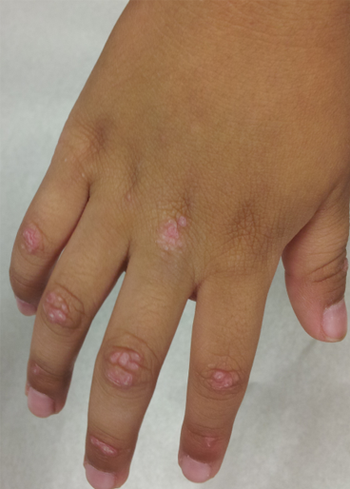
A 5-year-old boy had pain and weakness in his legs and had trouble climbing stairs. He had a dramatic rise in CPK followed by erythematous papules on the hands, as shown, and a rash around the eyelids. Which diagnosis is most likely?
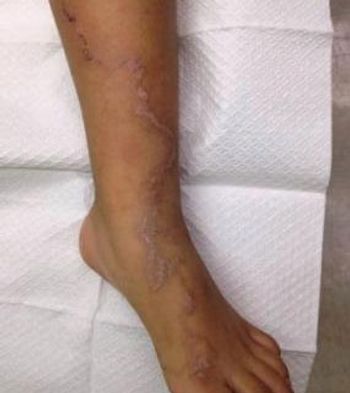
A 6-year-old boy had a 1-month history of an intensely pruritic “rash” on the left dorsal foot and left lower leg. He had a recent history of walking barefoot on a beach in south Florida where dogs are allowed. What's your diagnosis?
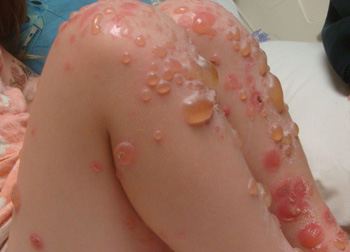
A 4-year-old, previously healthy girl presented with large, tense bullae involving up to 40% of her body surface area. Her parents described a 12-day history of itchy, papulovesicular lesions that had progressed into large blisters. Your dx?
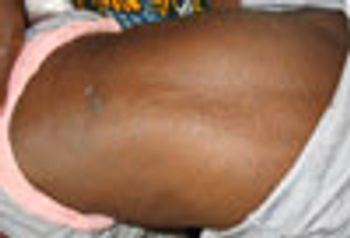
A toddler from Nigeria, whose parents remained there ill with AIDS, presented with a fever and a widespread itchy eruption. Tests for HIV infection were positive. Which systemic etiologies can be ruled out when such an eruption presents?

This patient's presentation also included a pruritic rash around the nasolabial region and inguinal folds. What type of deficiency would you test for?
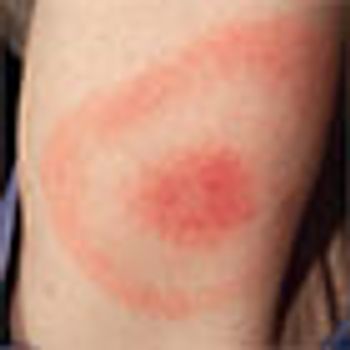
Erythema migrans, the characteristic rash of Lyme disease, often has a bull’s-eye appearance. Which of the following additional factors can help the diagnosis?
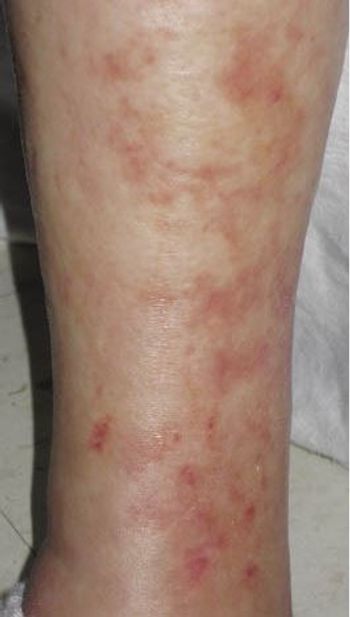
These symptoms may seem unrelated but are actually classic for a vitamin deficiency. Do you know which one?
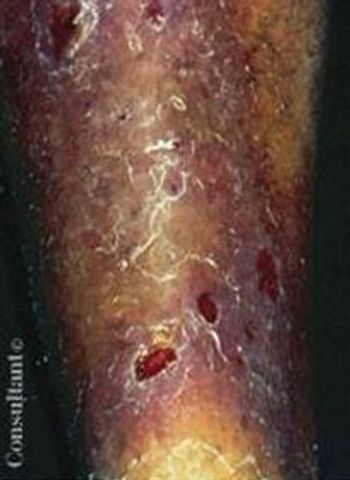
A 50-year-old African American woman with type 2 diabetes mellitus and hypertension was admitted with bilateral knee and thigh pain and swelling of both knees. MRI showed extensive edema in the distal thigh and gastrocnemius muscles and in subcutaneous fat. Fluid was seen at the short head of the left biceps femoris. The findings were consistent with diabetic myonecrosis. Which of the following statements about this condition is/are true?

Crohn disease patients with short gut syndrome may require total parenteral nutrition to replace nutrients no longer absorbed. But the supplementation has its risks. Can you name the source of the symptoms in this case?
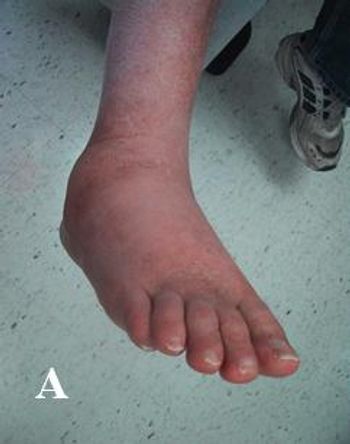
Acute stage Charcot foot is seen in a 55-year-old man with type 2 diabetes mellitus. He has a history of peripheral neuroarthropathy with a 1-week history of a hot, swollen right foot. A radiograph of the foot revealed acute stage Charcot neuroarthropathy.
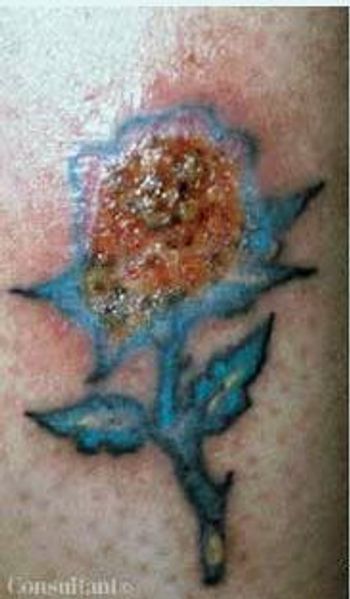
This patient with type 1 diabetes noted a painful erosion at the site of tattoo she had gotten several days earlier. What's the most likely cause?

Professional societies differ somewhat in their recommendations for when the benefits of annual screening reach an end. Two groups, however, are on the same page.

What would you suspect as the source in a woman 32 years of age?

Results of upper and lower endoscopy are inconclusive. Your next step?
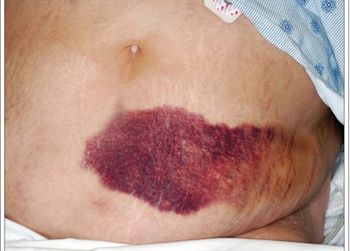
This firm exquisitely tender mass developed after the 77-year-old woman fell a few days earlier. She had a history of an embolic cerebral stroke, for which she takes warfarin. Your Dx?

This 42-year-old woman lost 100 lb during the year after gastric bypass surgery. Now, she is diagnosed as having an ulcer. What might be the cause of the lesion?

This chronic, autoimmune, subepidermal disease mostly affects older persons. Marked by spontaneous remissions and exacerbations, it manifests with tense blisters that usually start on the arms and legs. Your dx?